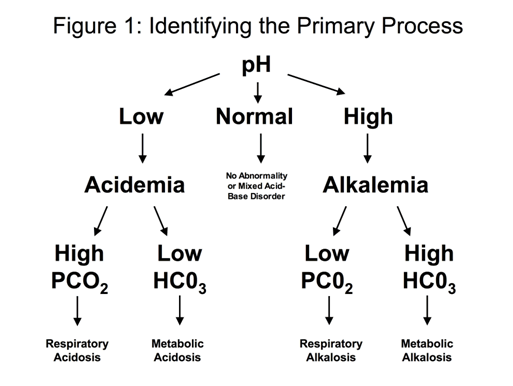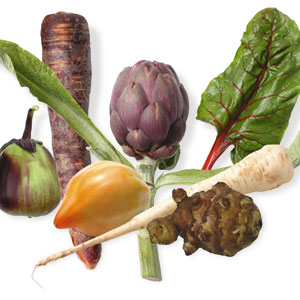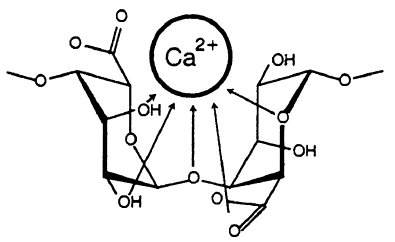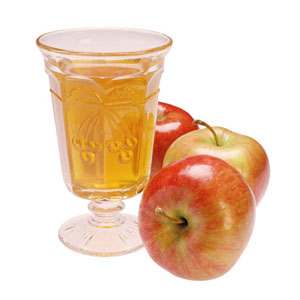
A progressive, degenerative disease of the brain and the leading cause of SENILITY in the United States. About 4 million Americans have Alzheimer’s disease, roughly 10 percent of the U.S. population over the age of 65 and nearly half of the population over 85. The disease can also strike younger adults (a small percentage of people in their 30s and 40s have Alzheimer’s). On average, a person lives between eight and 20 years after the onset of symptoms, which include short-term memory loss, difficulty performing simple tasks, and disorientation to time and place. Alzheimer’s disease results from the death of nerve cells in the forebrain and the hippocampus responsible for memory and learning. Patients also have a deficiency of ACETYLCHOLINE, a NEUROTRANSMITTER made by neurons that helps carry nerve impulses between cells. Currently, diagnosis of Alzheimer’s disease is very difficult, yet a comprehensive diagnosis is critical in treating the senile patient. Symptoms occurring before the age of 65 are designated early-onset Alzheimer’s; after 65, it is called late-onset Alzheimer’s.
Despite intensive research over the last decade, it is not known whether Alzheimer’s disease is a function of AGING, or whether it is the result of a specific disease process. Alzheimer’s seems to be a multifaceted disease, with environmental and genetic factors contributing. There is an association with Down’s syndrome and thyroid disease. Smoking a pack of cigarettes a day increases the odds of developing Alzheimer’s disease. Diet also plays a part. A healthy diet with low fat intake may reduce the risk of developing Alzheimer’s disease; studies also suggest that a high-fat diet during early and mid-adulthood may be associated with an increased risk of developing Alzheimer’s, especially in people with a genetic marker called apoE-4. In a retrospective study that examined food eaten by 304 men and women (72 with Alzheimer’s disease and 232 healthy individuals), researchers found that people with the apoE-4 gene who also ate the most fat were seven times more likely to develop Alzheimer’s than were people with the marker who ate lower-fat diets. In a separate 2000 study of Americans between the ages of 40 and 50, those who carried the apoE-4 gene and whose diet consisted of 40 percent fat calories had 29 times the risk for Alzheimer’s compared to non-apoE-4 carriers on the same high-fat diet.
Some population studies have reported an association between low-fat diets and a lower incidence in Alzheimer’s. For example, in China and Nigeria, where fat intake is low, the risk of developing Alzheimer’s is 1 percent at age 65 compared to 5 percent in the United States. In the Netherlands researchers reported an association between dementia and diets high in total fat, saturated fat, and cholesterol.
Scientists have identified four genes that increase the risk of developing Alzheimer’s. APOE-4 is implicated in late-onset cases. This gene can be passed down from one or both parents. Patients who have one copy of the gene have a three times greater risk of developing the disease than do patients who do not. Patients who inherit two copies have an eight times greater risk of developing Alzheimer’s. The other three genes—presenilin 1, presenilin 2, and amyloid precursor protein—are associated with early-onset cases. Nearly everyone who carries one or more of these genes will develop early-onset Alzheimer’s.
Another hypothesis for Alzheimer’s links
chronic CALCIUM deficiency to increased uptake of ALUMINUM and silicon by the brain. Aluminum concentrates in the brains of patients with the disease; whether this is a cause or an effect is unknown. In postmenopausal women, estrogen (hormone) replacement therapy may help prevent Alzheimer’s. The importance of estrogen in brain health is gradually being recognized. Alternatively, there may be alterations in nerve cell membranes. Other evidence links immune system activation with the disease process.
Research points to the following possible causes of senility: exposure to toxins, oxidative damage due to FREE RADICALS, abnormal protein metabolism, slow viruses, the narrowing by cholesterol deposits of arteries feeding the brain, ZINC and VITAMIN B12 deficiencies, head trauma, and adverse drug reactions that decrease blood and oxygen supply to the brain.
Clinical trials of an experimental vaccine for the disease, called AN-1792, were halted abruptly in early 2002 when several participants developed brain inflammation after taking it. The drug was a form of beta-amyloid, a protein fragment found in the amyloid plaques that grow over the brain tissue of Alzheimer’s patients. Researchers had hoped exposure to the protein would trigger participants’ IMMUNE SYSTEMs to produce antibodies to the amyloid plaques.
Experiments in mice have shown that FOLIC ACID—a vitamin found in high amounts in dark green, leafy VEGETABLES, CITRUS FRUITS and JUICES, whole wheat BREAD, and dry BEANS—may help ward off Alzheimer’s disease. Since 1998 the U.S.
FDA has required the addition of folic acid to enriched breads, CEREALS, FLOURS, CORNMEAL, PASTA, RICE, and other GRAIN products.
There is limited evidence that antioxidants may help fight or prevent some of the brain cell damage in Alzheimer’s disease that may be attributed to free radicals, thus slowing the progression of the disease. In particular, some evidence suggests that vitamin C or vitamin E supplements can slow the course of Alzheimer’s over several years. In a National Institute on Aging study, the antioxidant vitamin E delayed by six months the progression of some symptoms of Alzheimer’s disease. In another National Institute on Aging study, people in the middle to late stages of Alzheimer’s who took vitamin E at levels 70 times higher than the recommended daily dose noticed some beneficial effects. At a dose of 2,000 IU daily, vitamin E was able to slow the expected rate of decline compared to patients who did not take the vitamin. Other studies suggest that taking antioxidants (vitamins C and E) might significantly lower the risk of developing Alzheimer’s. In one preliminary Massachusetts study, none of the 50 subjects who used either vitamin C or E developed Alzheimer’s at follow-up studies. In a Dutch study of 5,000 people, a diet high in antioxidants reduced the risk of developing Alzheimer’s.
Other antioxidants, such as GINKGO biloba and PHOSPHATIDYLSERINE, melatonin, flavonoids (chemicals found in many plants, including fruits and vegetables), and carotenoids (pigments found in plants such as carrots) also may help ease symptoms of Alzheimer’s disease. Small studies of ginkgo did find slight improvement among patients with Alzheimer’s who took the herb. Although German physicians have approval to use ginkgo to treat Alzheimer’s, and it has been used for thousands of years in Chinese medicine, North American physicians disagree as to its benefits as a memory treatment.
According to several studies, eating plenty of dark-colored fruits and vegetables may slow brain aging. Extracts of blueberries and strawberries reversed age-related decline in lab animal brain function. Blueberries may be the best anti-Alzheimer’s antioxidant of all. When Tufts University researchers analyzed more than 40 fruits and vegetables, they found that raw blueberries contained the highest level of antioxidants (nearly 60 times the recommended daily levels)—more than blackberries, beets, spinach, and garlic. Animals fed an antioxidant-rich blueberry extract diet showed fewer age-related motor changes and outperformed their study counterparts on memory tests. Some studies on wine have reported a lower risk, but they have not been consistent. It might be that wine may increase even more risk of developing Alzheimer’s for people who carry the apoE-4 gene that has been linked to Alzheimer’s—while protecting people who do not carry the gene. However, supplements containing high doses of antioxidants can cause adverse effects. In addition, high doses of vitamin E are potentially harmful if combined with blood-thinning drugs. No one should take these or any supplements without consulting a doctor.
It is safer to consume antioxidants as part of a healthy diet; antioxidants are found in most dark colored fruits and vegetables, whole grains, legumes, nuts, and wheat germ.
Nutritional approaches to treatment employ CHOLINE and LECITHIN (phosphatidylcholine) supplements. The rationale for their use is based on the fact that the brains of diseased patients do not make enough acetylcholine, and supplying this building block could boost acetylcholine production. Results of clinical studies have not shown consistent improvements. Researchers have used drugs that help maintain acetylcholine levels with mixed results. A growth promoter called nerve growth factor may enhance brain function in aged experimental animals. Preliminary research suggests that GINKGO biloba, a leaf extract, is known to have antioxidant and anti-inflammatory properties and to enhance NEUROTRANSMITTER function, alleviates the symptoms of Alzheimer’s disease. Scientists are currently studying whether a lowfat, high-fiber diet may reduce the risk of developing Alzheimer’s disease just as it lowers the risk of other diseases associated with aging, like cardiovascular disease and cancer. Finnish researchers who studied 1,500 patients for 21 years found that subjects with high CHOLESTEROL and high blood pressure had a corresponding higher risk of developing Alzheimer’s. French researchers noted a link between high blood pressure and Alzheimer’s risk.




 A genus of MUSHROOM that includes many poisonous species, along with a few edible ones. Amanita species can be confused with edible mushrooms. The most common cause of mushroom poisoning is the ingestion of A. phalloides (death cap) and A. virosa (destroying angel). These species produce specific toxins called amatoxins and phallotoxins, compounds with cyclic AMINO ACID structures. A single mushroom may contain enough of these poisons to kill an adult. Eating the mushroom can cause LIVER, HEART, and KIDNEY damage, as well as symptoms of common shock and delirium.
A genus of MUSHROOM that includes many poisonous species, along with a few edible ones. Amanita species can be confused with edible mushrooms. The most common cause of mushroom poisoning is the ingestion of A. phalloides (death cap) and A. virosa (destroying angel). These species produce specific toxins called amatoxins and phallotoxins, compounds with cyclic AMINO ACID structures. A single mushroom may contain enough of these poisons to kill an adult. Eating the mushroom can cause LIVER, HEART, and KIDNEY damage, as well as symptoms of common shock and delirium.
 A progressive, degenerative disease of the brain and the leading cause of SENILITY in the United States. About 4 million Americans have Alzheimer’s disease, roughly 10 percent of the U.S. population over the age of 65 and nearly half of the population over 85. The disease can also strike younger adults (a small percentage of people in their 30s and 40s have Alzheimer’s). On average, a person lives between eight and 20 years after the onset of symptoms, which include short-term memory loss, difficulty performing simple tasks, and disorientation to time and place. Alzheimer’s disease results from the death of nerve cells in the forebrain and the hippocampus responsible for memory and learning. Patients also have a deficiency of ACETYLCHOLINE, a NEUROTRANSMITTER made by neurons that helps carry nerve impulses between cells. Currently, diagnosis of Alzheimer’s disease is very difficult, yet a comprehensive diagnosis is critical in treating the senile patient. Symptoms occurring before the age of 65 are designated early-onset Alzheimer’s; after 65, it is called late-onset Alzheimer’s.
A progressive, degenerative disease of the brain and the leading cause of SENILITY in the United States. About 4 million Americans have Alzheimer’s disease, roughly 10 percent of the U.S. population over the age of 65 and nearly half of the population over 85. The disease can also strike younger adults (a small percentage of people in their 30s and 40s have Alzheimer’s). On average, a person lives between eight and 20 years after the onset of symptoms, which include short-term memory loss, difficulty performing simple tasks, and disorientation to time and place. Alzheimer’s disease results from the death of nerve cells in the forebrain and the hippocampus responsible for memory and learning. Patients also have a deficiency of ACETYLCHOLINE, a NEUROTRANSMITTER made by neurons that helps carry nerve impulses between cells. Currently, diagnosis of Alzheimer’s disease is very difficult, yet a comprehensive diagnosis is critical in treating the senile patient. Symptoms occurring before the age of 65 are designated early-onset Alzheimer’s; after 65, it is called late-onset Alzheimer’s. A metallic ion that is widely distributed in water and soil. Drinking water often contains aluminum beyond levels leached from soil and clay because aluminum hydroxide is often added to municipal water supplies to clarify drinking water.
A metallic ion that is widely distributed in water and soil. Drinking water often contains aluminum beyond levels leached from soil and clay because aluminum hydroxide is often added to municipal water supplies to clarify drinking water. Chemically speaking, this FATTY ACID has 18 carbons and a pair of double bonds. It cannot be synthesized by the body and must be obtained from the diet. A POLYUNSATURATED FATTY ACID, it is classified as an essential dietary nutrient. Alpha linolenic acid is the smallest of the omega-3 family of polyunsaturated fatty acids, distinguished by subtle structural differences in which the double bonds begin at the third carbon from the end. It is the building block of larger omega-3 acids, including EICOSOPENTAENOIC ACID and DOCOSOHEXAENOIC ACID (DHA), which in turn form the PG3 class of PROSTAGLANDINS, hormone-like substances that decrease inflammation, decrease blood clotting and lower blood CHOLESTEROL. PG3 prostaglandins help return the body to equilibrium after physical stress or injury.
Chemically speaking, this FATTY ACID has 18 carbons and a pair of double bonds. It cannot be synthesized by the body and must be obtained from the diet. A POLYUNSATURATED FATTY ACID, it is classified as an essential dietary nutrient. Alpha linolenic acid is the smallest of the omega-3 family of polyunsaturated fatty acids, distinguished by subtle structural differences in which the double bonds begin at the third carbon from the end. It is the building block of larger omega-3 acids, including EICOSOPENTAENOIC ACID and DOCOSOHEXAENOIC ACID (DHA), which in turn form the PG3 class of PROSTAGLANDINS, hormone-like substances that decrease inflammation, decrease blood clotting and lower blood CHOLESTEROL. PG3 prostaglandins help return the body to equilibrium after physical stress or injury.
 A cultivated, elongated nut with white meat and a brown skin. The almond tree resembles the PEACH, to which it is related. The almond originated in Asia and was known to the Romans as the “Greek nut.” There are two varieties: the sweet almond and the bitter almond, which has a stronger flavor. Almond extracts are used to flavor cakes and pastries, and slivered or flaked sweet almonds are used in cakes, cookies, and pastry. Dried almonds are served raw or roasted and salted. Nuts roasted with coconut or palm oil dramatically increase their caloric content and increase their SATURATED FAT content. Almonds are also used as ingredients of stuffings and couscous, and they can accompany FISH or POULTRY dishes (the garnish is known as amandine). Almonds are a good source of CALCIUM and they are also rich in oil. Most of the oil is monounsaturated and more closely resembles OLIVE OIL than typical vegetable oils like SAFFLOWER oil, which are high in polyunsaturates. One ounce (28 g) of raw, sweet almonds provides 167 calories; carbohydrate, 5.7 g; fiber, 3 g; fat, 14.8 g; protein, 5.9 g; calcium, 75 mg; iron, 1.0 mg; niacin, 0.95 mg; thiamin, 0.06 mg; riboflavin, 0.22 mg.
A cultivated, elongated nut with white meat and a brown skin. The almond tree resembles the PEACH, to which it is related. The almond originated in Asia and was known to the Romans as the “Greek nut.” There are two varieties: the sweet almond and the bitter almond, which has a stronger flavor. Almond extracts are used to flavor cakes and pastries, and slivered or flaked sweet almonds are used in cakes, cookies, and pastry. Dried almonds are served raw or roasted and salted. Nuts roasted with coconut or palm oil dramatically increase their caloric content and increase their SATURATED FAT content. Almonds are also used as ingredients of stuffings and couscous, and they can accompany FISH or POULTRY dishes (the garnish is known as amandine). Almonds are a good source of CALCIUM and they are also rich in oil. Most of the oil is monounsaturated and more closely resembles OLIVE OIL than typical vegetable oils like SAFFLOWER oil, which are high in polyunsaturates. One ounce (28 g) of raw, sweet almonds provides 167 calories; carbohydrate, 5.7 g; fiber, 3 g; fat, 14.8 g; protein, 5.9 g; calcium, 75 mg; iron, 1.0 mg; niacin, 0.95 mg; thiamin, 0.06 mg; riboflavin, 0.22 mg.


 This condition refers to allergyn symptoms associated with the chronic inflammation typical of hay fever: a perpetually stuffy, runny nose, sneezing, puffy bags and dark circles under the eyes, and a puffy face. Allergic rhinitis can lead to chronic earaches, especially in children, and to inflamed sinuses (sinusitis). It is more common among children, but can occur at any age. Allergic rhinitis is the result of a specific type of ANTIBODY, IgE, which binds to mast cells, defensive cells of the IMMUNE SYSTEM, to stimulate inflammation. Therefore allergic rhinitis can be measured by a skin test. Nasal symptoms occur immediately after exposure to common allergens, including pollen, animal dander, house dust, mites, insects, MOLD, and foods. Identification of the offending substance and reduced exposure are important; complete avoidance may be curative.
This condition refers to allergyn symptoms associated with the chronic inflammation typical of hay fever: a perpetually stuffy, runny nose, sneezing, puffy bags and dark circles under the eyes, and a puffy face. Allergic rhinitis can lead to chronic earaches, especially in children, and to inflamed sinuses (sinusitis). It is more common among children, but can occur at any age. Allergic rhinitis is the result of a specific type of ANTIBODY, IgE, which binds to mast cells, defensive cells of the IMMUNE SYSTEM, to stimulate inflammation. Therefore allergic rhinitis can be measured by a skin test. Nasal symptoms occur immediately after exposure to common allergens, including pollen, animal dander, house dust, mites, insects, MOLD, and foods. Identification of the offending substance and reduced exposure are important; complete avoidance may be curative.

 The slight rise in blood pH following a meal, when the BLOOD temporarily becomes more ALKALINE. When the STOMACH produces hydrochloric acid (STOMACH ACID) for use in DIGESTION, it removes a fraction of negatively charged CHLORIDE ions from circulation. Chloride is then replaced by BICARBONATE in the blood, which tends to raise blood pH. As the meal is digested, chloride ions are reabsorbed by the INTESTINE and again enter the bloodstream. In turn, bicarbonate is reabsorbed and the pH returns to normal. The URINE may become more alkaline during digestion as the body compensates for the change in blood pH.
The slight rise in blood pH following a meal, when the BLOOD temporarily becomes more ALKALINE. When the STOMACH produces hydrochloric acid (STOMACH ACID) for use in DIGESTION, it removes a fraction of negatively charged CHLORIDE ions from circulation. Chloride is then replaced by BICARBONATE in the blood, which tends to raise blood pH. As the meal is digested, chloride ions are reabsorbed by the INTESTINE and again enter the bloodstream. In turn, bicarbonate is reabsorbed and the pH returns to normal. The URINE may become more alkaline during digestion as the body compensates for the change in blood pH.
 A blood condition characterized by excessive alkalinity (excessively high pH). A blood pH greater than 7.4 is considered alkaline and rep represents an accumulation of hydroxide ions and depletion of hydrogen ions, CARBON DIOXIDE, and CARBONIC ACID. The body is exquisitely buffered to keep blood pH slightly alkaline, within a very narrow range, 7.35–7.45. However, this equilibrium can be shifted by loss of STOMACH ACID through vomiting; by the consumption of alkaline medications such as those used to treat ulcers; and by rapid breathing (hyperventilation), which rapidly decreases the body’s stores of carbon dioxide. The body compensates for alkalemia and reestablishes normal blood pH by slowing the respiration rate (breathing); this increases the level of carbon dioxide in the blood, which spontaneously forms more carbonic acid. The KIDNEYS can compensate for elevated pH by excreting alkaline urine.
A blood condition characterized by excessive alkalinity (excessively high pH). A blood pH greater than 7.4 is considered alkaline and rep represents an accumulation of hydroxide ions and depletion of hydrogen ions, CARBON DIOXIDE, and CARBONIC ACID. The body is exquisitely buffered to keep blood pH slightly alkaline, within a very narrow range, 7.35–7.45. However, this equilibrium can be shifted by loss of STOMACH ACID through vomiting; by the consumption of alkaline medications such as those used to treat ulcers; and by rapid breathing (hyperventilation), which rapidly decreases the body’s stores of carbon dioxide. The body compensates for alkalemia and reestablishes normal blood pH by slowing the respiration rate (breathing); this increases the level of carbon dioxide in the blood, which spontaneously forms more carbonic acid. The KIDNEYS can compensate for elevated pH by excreting alkaline urine.
 A non-caloric ARTIFICIAL SWEETENER that is 2,000 times sweeter than sugar that has not yet been approved by the U.S. Food and Drug Administration. This sweetener was developed to be safer than ASPARTAME. Unlike aspartame, alitame does not contain phenylalanine and consequently would likely be safe for individuals with PHENYLKETONURIA (PKU), a genetic intolerance to this amino acid.
A non-caloric ARTIFICIAL SWEETENER that is 2,000 times sweeter than sugar that has not yet been approved by the U.S. Food and Drug Administration. This sweetener was developed to be safer than ASPARTAME. Unlike aspartame, alitame does not contain phenylalanine and consequently would likely be safe for individuals with PHENYLKETONURIA (PKU), a genetic intolerance to this amino acid.
 The physiologic processes by which food nurtures and maintains the body. These include chewing (MASTICATION), swallowing, and digesting food. Alimentation also encompasses the ABSORPTION of NUTRIENTS (VITAMINS MINERALS, AMINO ACIDS, FAT, CARBOHYDRATES) by the intestine and their use in CATABOLISM (energy production) and in ANABOLISM (building cellular constituents). The term alimentary canal refers to the digestive cavity running from the MOUTH to the anus. Artificial alimentation refers to feeding a patient artificially either by intravenous procedures or by a nasal tube. Forced alimentation is feeding a patient who is unwilling to eat.
The physiologic processes by which food nurtures and maintains the body. These include chewing (MASTICATION), swallowing, and digesting food. Alimentation also encompasses the ABSORPTION of NUTRIENTS (VITAMINS MINERALS, AMINO ACIDS, FAT, CARBOHYDRATES) by the intestine and their use in CATABOLISM (energy production) and in ANABOLISM (building cellular constituents). The term alimentary canal refers to the digestive cavity running from the MOUTH to the anus. Artificial alimentation refers to feeding a patient artificially either by intravenous procedures or by a nasal tube. Forced alimentation is feeding a patient who is unwilling to eat.
 (ammonium, calcium, potassium, and sodium salts of alginic acid) A food additive obtained from the giant kelp, a brown algae commercially harvested off the coast of California. Alginate is a major constituent of the cell wall and consists of polymers of acidic sugars Alginate is used by the food industry as a thickening and stabilizing agent because calcium alginate forms very stable gels in water. It prevents jelly in pastries from melting during baking and provides smooth textures to ICE CREAM, YOGURT and CHEESE, CANDY, whipped cream in pressurized cans, and canned frosting. Alginate also helps keep cocoa butter dispersed in chocolate milk. The red PIMENTO stuffed in green OLIVES contains the most alginate (6 percent) of any food source. Alginate is not used in acidic foods and beverage such as salad dressings and SOFT DRINKS, because it forms sediment under these conditions.
(ammonium, calcium, potassium, and sodium salts of alginic acid) A food additive obtained from the giant kelp, a brown algae commercially harvested off the coast of California. Alginate is a major constituent of the cell wall and consists of polymers of acidic sugars Alginate is used by the food industry as a thickening and stabilizing agent because calcium alginate forms very stable gels in water. It prevents jelly in pastries from melting during baking and provides smooth textures to ICE CREAM, YOGURT and CHEESE, CANDY, whipped cream in pressurized cans, and canned frosting. Alginate also helps keep cocoa butter dispersed in chocolate milk. The red PIMENTO stuffed in green OLIVES contains the most alginate (6 percent) of any food source. Alginate is not used in acidic foods and beverage such as salad dressings and SOFT DRINKS, because it forms sediment under these conditions.
 (Medicago sativa) A LEGUME used primarily for fodder throughout the world. As a nutritional supplement, this plant is a rich source of TRACE MINERALS, BETA-CAROTENE, ESSENTIAL FATTY ACIDS, VITAMIN K, and the B COMPLEX vitamins. Alfalfa contains significant FIBER and is a rich source of PROTEIN (25 percent by weight). In Asia, alfalfa leaves are used in the form of greens as a VEGETABLE.
(Medicago sativa) A LEGUME used primarily for fodder throughout the world. As a nutritional supplement, this plant is a rich source of TRACE MINERALS, BETA-CAROTENE, ESSENTIAL FATTY ACIDS, VITAMIN K, and the B COMPLEX vitamins. Alfalfa contains significant FIBER and is a rich source of PROTEIN (25 percent by weight). In Asia, alfalfa leaves are used in the form of greens as a VEGETABLE. A hormone of the adrenal glands responsible for regulating SODIUM in the blood. It is classified as a corticosteroid, a group of hormones synthesized by the adrenal cortex. Aldosterone is the principal MINERALOCORTICOID, which directs the KIDNEYS to conserve SODIUM by reabsorbing sodium and water from urine. In the kidneys, aldosterone stimulates the renal tubules to release POTASSIUM and hydrogen ions in place of sodium, thus increasing urine acidity. Mineralocorticoids also increase sodium reabsorption from sweat, SALIVA, and GASTRIC JUICES. Other steroid hormones, deoxycorticosterone, corticosterone, and progesterone, can also cause sodium retention, though they are much less active.
A hormone of the adrenal glands responsible for regulating SODIUM in the blood. It is classified as a corticosteroid, a group of hormones synthesized by the adrenal cortex. Aldosterone is the principal MINERALOCORTICOID, which directs the KIDNEYS to conserve SODIUM by reabsorbing sodium and water from urine. In the kidneys, aldosterone stimulates the renal tubules to release POTASSIUM and hydrogen ions in place of sodium, thus increasing urine acidity. Mineralocorticoids also increase sodium reabsorption from sweat, SALIVA, and GASTRIC JUICES. Other steroid hormones, deoxycorticosterone, corticosterone, and progesterone, can also cause sodium retention, though they are much less active. (Temik; Carbamyl) A very toxic insecticide widely used on POTATOES, SOYBEANS, PEANUTS, and citrus crops for control of chewing and sucking insects. Aldicarb was assumed to break down rapidly after application. However, tests show that it can persist in soil for years and contaminate crops planted in the same soil later. Several instances of aldicarb poisoning indicate the potential hazard of using this pesticide.
(Temik; Carbamyl) A very toxic insecticide widely used on POTATOES, SOYBEANS, PEANUTS, and citrus crops for control of chewing and sucking insects. Aldicarb was assumed to break down rapidly after application. However, tests show that it can persist in soil for years and contaminate crops planted in the same soil later. Several instances of aldicarb poisoning indicate the potential hazard of using this pesticide.
 ALCOHOL interacts with many medications. Drinking alcohol can alter the way the body metabolizes drugs. As an example, the LIVER adapts to alcohol consumption by increasing its battery of drug-destroying ENZYMES. Because a heavy drinker may metabolize a sedative rapidly, its effects could wear off sooner than in a non-drinker, leaving the heavy drinker undersedated. Patients should read prescription labels carefully before drinking, and inform dentists, physicians, pharmacists, and other health care providers if they drink.
ALCOHOL interacts with many medications. Drinking alcohol can alter the way the body metabolizes drugs. As an example, the LIVER adapts to alcohol consumption by increasing its battery of drug-destroying ENZYMES. Because a heavy drinker may metabolize a sedative rapidly, its effects could wear off sooner than in a non-drinker, leaving the heavy drinker undersedated. Patients should read prescription labels carefully before drinking, and inform dentists, physicians, pharmacists, and other health care providers if they drink.



 A chemical formerly used to improve the color, yield, and storage qualities of APPLES. It is not a PESTICIDE. Until the late 1980s, Alar was used on an estimated 5 percent to 10 percent of the American apple crop. It was also used on CHERRIES and PEANUTS. Alar is a systemic pollutant, meaning it is distributed throughout the plant and cannot be washed off. Because alar has caused CANCER in experimental animals, experts worried
A chemical formerly used to improve the color, yield, and storage qualities of APPLES. It is not a PESTICIDE. Until the late 1980s, Alar was used on an estimated 5 percent to 10 percent of the American apple crop. It was also used on CHERRIES and PEANUTS. Alar is a systemic pollutant, meaning it is distributed throughout the plant and cannot be washed off. Because alar has caused CANCER in experimental animals, experts worried One of the simplest AMINO ACIDS used to build PROTEINS. Alanine is readily formed in the body from PYRUVIC ACID, a direct product of GLUCOSE utilization; hence, it is classified as a non-dietary, essential amino acid. In addition to serving as a protein building block, alanine plays an important role in transporting the toxic waste product, AMMONIA, out of muscle. Ammonia is produced when muscle cells break down amino acids for energy. Cells couple ammonia with a simple acid called pyruvic acid to form alanine, which is then released into the bloodstream.
One of the simplest AMINO ACIDS used to build PROTEINS. Alanine is readily formed in the body from PYRUVIC ACID, a direct product of GLUCOSE utilization; hence, it is classified as a non-dietary, essential amino acid. In addition to serving as a protein building block, alanine plays an important role in transporting the toxic waste product, AMMONIA, out of muscle. Ammonia is produced when muscle cells break down amino acids for energy. Cells couple ammonia with a simple acid called pyruvic acid to form alanine, which is then released into the bloodstream.


